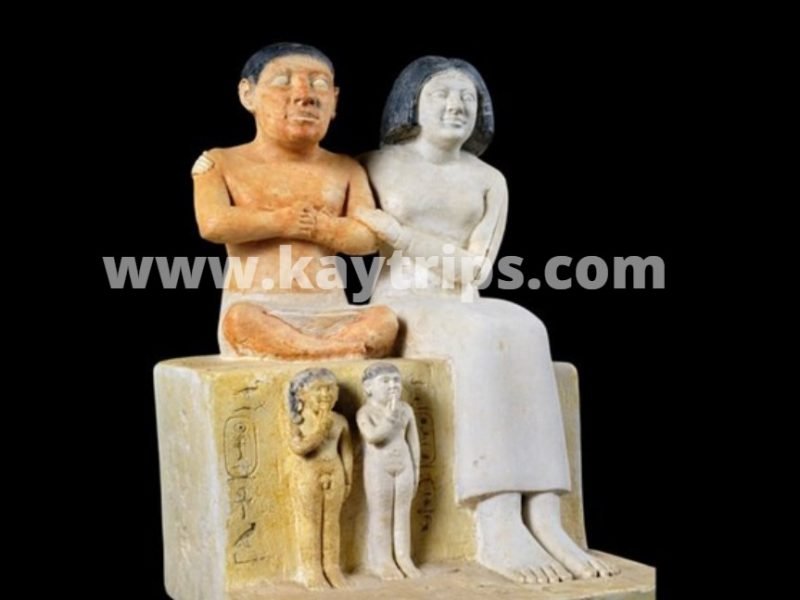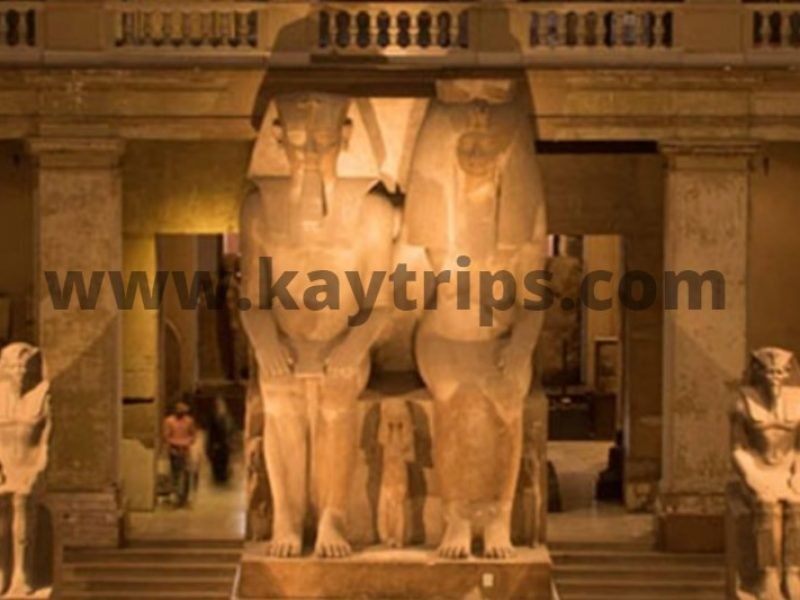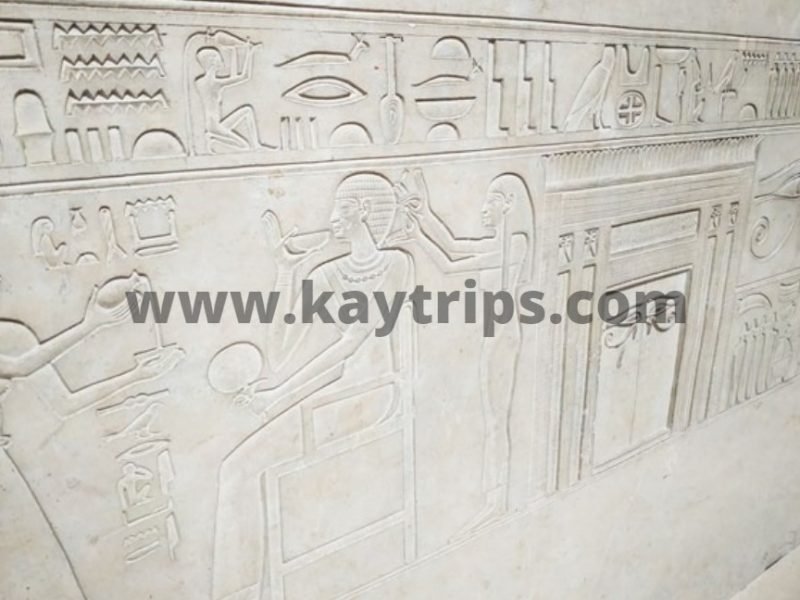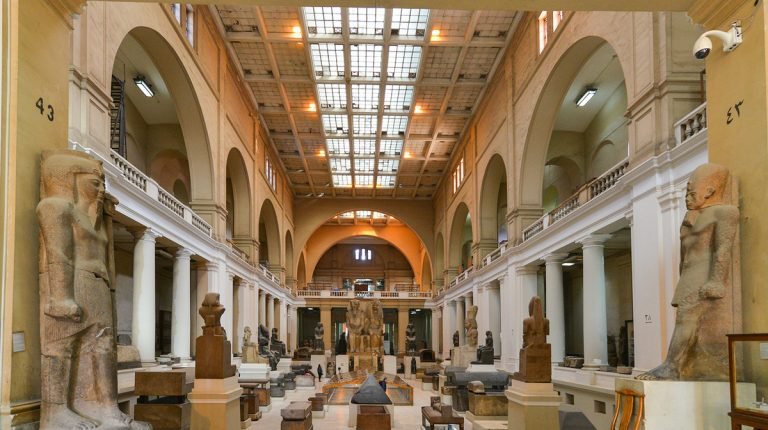About Cairo City
Cairo, Arabic Al-Qhirah (“The Victorious”), is Egypt’s capital and one of Africa’s largest cities. Cairo has stood on the Nile’s banks for over 1,000 years, predominantly on the eastern bank, around 500 miles (800 kilometers) downstream from the Aswan High Dam. In the country’s northeast, Cairo is the entry point to the Nile delta, where the lower Nile divides into the Rosetta and Damietta branches. The Cairo muhafaza (governorate) and other districts, some of which belong to neighboring governorates such as Al-Jizah and Qalubiyyah, make up Metropolitan Cairo. Eighty-three square miles of governorate (214 square km). Governorate population: 7,902,085 in 2006; governorate population: 9,539,673 in 2017; urban agglom. population: 19,295,000.
The character of the city
Cairo is a city of stark contrasts. Lush greenery coexists with lofty towers along the well-irrigated beach. Browns and ochres are the dominant colors of land and buildings in the older inland quarters to the east, beneath the foothills of the Eastern Desert and the rocky promontories of the Muqattam Hills and the Al-Jabal al-Ahmar (Arabic: Red Mountain).
City site
Cairo is fan-shaped, with the river valley squeezed between desert escarpments in the south and the delta merging in the north. As a decreasing river channel left land flood-free, the city grew westward over the centuries. However, in response to increased demand, the city has been extended to the north and south, and a developing annex on the Nile’s western shore has been created.
Climate
Cairo has only two seasons: summer for about eight months and winter for four months. The average daily maximum temperature in the hottest summer months—June, July, and August—is 95 degrees Fahrenheit (35 degrees Celsius), with an average daily minimum of 70 degrees Fahrenheit (21 degrees Celsius). Summer temperatures had hit 117 degrees Fahrenheit (47 degrees Celsius). The strong Tropic of Cancer sun makes for warm, dry days during the winter, while nights are cold and humid, often cooled by Nile breezes. From January–to February, the average daily maximum temperature is 67°F (19°C), and the average daily low is 47°F (8.5°C).
All About Egyptian Museum
Arabic Museum, Egyptian Museum Al-Mataf al-Mir, Egyptian antiquities museum in Cairo, created in the 19th century by French Egyptologist Auguste Mariette and housing the world’s most important collection of its sort until the 21st century.
The Egyptian Museum was created in 1858 in Bulaq, transferred to Al-Jizah (Giza), and finally settled in 1897–1902 in downtown Cairo. The museum was the first purpose-built museum in the Middle East and North Africa, created by French architect Marcel Dourgnon in Neoclassical style.
The Egyptian Museum, centrally placed on the edge of Cairo’s Tahrir Square, is difficult to miss on any Cairo visit. It was created specifically to house Ancient Egyptian artifacts and opened in 1902. The world’s most extensive Ancient Egyptian archeological history collection may be found there.
The Egyptian Museum is located in downtown Cairo, on Tahrir Square. Downtown is known to Egyptians as Wust al-Balad, meaning “the city’s center.” The name comes from the fact that the Downtown region is the most vibrant and active part of the city. Cairo, like Downtown, is sometimes referred to as Egypt’s “city that never sleeps.” It is not only Cairo’s heart but also the hub of everything. It is not only Cairo’s heart but also the core of all life’s activities and facilities and a crossroads for various civilizations. Midan Talaat Harb and Midan Tahrir are well-known in the downtown area.
The museum is unique in that it covers the entire history of Egyptian civilization, focusing on Pharaonic and Greco-Roman artifacts. Several enormous and heavy items are on the ground floor, including colossal figurines in the central atrium. The museum had over 100,000 objects in its collection at one point. However, due to the museum’s close and limited location, most of the relics were never displayed.
Reliefs, sarcophagi, papyri, funerary art, the contents of numerous tombs, jewelry, ornaments of all types, and other things are among the treasures. The Tanis collection features silver coffins, gold masks, royal sarcophagi, and jewels and is occasionally compared in spectacle to Tutankhamun’s tomb, despite being discovered later and less well known. There are gigantic sculptures of Amenhotep IV (Akhenaton) from Karnak and granite figures of Queen Hatshepsut. A modest but remarkable collection of Fayum portraits from the Hellenistic and Roman eras is also displayed at the museum.
The Egyptian government began transporting tens of thousands of artifacts from the museum to the enormous Grand Egyptian Museum under construction in nearby Giza in the late 2010s, including thousands of pieces from Tutankhamun’s tomb. A block figure of Queen Hetepheres, one of the earliest specimens of its type, and a black granite sculpture of Queen Nefertiti were among the other items transferred from the Cairo museum to the new one. Amenhotep II’s sculpture, depicting him as the god Tenen, was also transported. Over 120,000 objects, including the contents of Tutankhamen’s tomb and most of the mummies discovered since the 19th century, are housed in Cairo’s Egyptian Museum.
The Egyptian Museum, the Middle East’s oldest archaeological museum, includes the world’s most incredible collection of Pharaonic antiquities. The museum houses an extensive collection that dates from the Predynastic Period through the Greco-Roman Period.
The building’s architect was chosen through a first-of-its-kind international competition in 1895, which French architect Marcel Dourgnon won. Khedive Abbas Helmy II opened the museum in 1902, and it has since become a historic icon in downtown Cairo, housing some of the world’s most exquisite ancient masterpieces.
The total burials of Yuya and Thuya, Psusennes I and the Tanis treasures, and the Narmer Palette marking the unification of Upper and Lower Egypt under one pharaoh are among the museum’s unequaled collection. The museum also exhibits magnificent statues of the ancient rulers Khufu, Khafre, and Menkaure, architects of the Giza plateau’s pyramids. This vast museum is completed with an extensive collection of papyri, coffins, and jewelry, among other items.
Statue of the Dwarf Seneb and His Family
Seneb and his family were depicted in this group statue unearthed in a naos in his mastaba tomb in Giza. Seneb is shown seated, his legs crossed, beside his wife, tenderly hugs him. His wife is a healthy height. The sculptor carves the couple’s two children where Seneb’s legs would have been if he had been the same height as his wife for symmetry. The youngsters are pictured naked, with their index finger in their mouth, as was the traditional way of depicting children in art. The kid is represented on the viewer’s left, with a youthful sidelock and skin darker than that of his sister, who stands to his left. Male children wore the sidelock of youth, which was cut off when they reached puberty.
Seneb was the burial priest of the deceased kings Khufu and Djedefra and was in charge of the royal wardrobe, according to the inscriptions on the base and front of the throne.
Seneb’s mausoleum is notable for having the world’s first ceiling dome over a square chamber.
Late Dynasty 5- Early Dynasty 6 (24th – 23rd Century BC)
Provenance: Giza, Tomb of Seneb.
Medium: Painted Limestone.

Amenhotep III and Tiye Colossal Statue
The royal pair, Amenhotep III and his wife Tiye, and their three daughters, are shown in this giant statue. This is the largest known ancient Egyptian family group statue ever carved, and it should date from Amenhotep III’s time, which was characterized by enormous monumentality.
New Kingdom, Dynasty 18, reign of Amenhotep (c.1390–1352 BC)
Medium: Limestone
Provenance: Luxor

Sarcophagus of Kawit
This is the sarcophagus of Queen Kawit, the wife of the Middle Kingdom’s founder, King Nebhepetre Mentuhotep. The exterior faces are ornately painted with images from her daily life, such as her drinking in front of a table packed with food while one of the maid hairdressers the queen’s hair and another maid pours her next cup. In her free hand, she holds a mirror. In another picture, she is shown dipping her finger in an unguent jar held up by a servant while holding a lotus flower to her nose. Her chest is in front of her, with the jewelry stacked on top of each other. Cows are milked in different scenes, and calves are breastfeeding. The lotus, the cows, and the milk, along with the goddess of love, beauty, fertility, music, and motherhood, Hathor, constitute very apparent allusions to fertility, youth, rebirth, and Hathor, the goddess of love, beauty, fertility, music, and motherhood.
Middle Kingdom, 11th Dynasty, reign of Nebhepetre Mentuhotep (c.2055–2004 BC)
Medium: Limestone
Provenance: Deir al‑Bahari

At KayTrips, we believe in the power of travel — and in helping you make the most of every trip. We can help you make the right choice when shopping for hotels, restaurants, and attractions. You’ll also find low airfares, free travel guides, vacation rental listings, popular forums with advice about virtually every destination, and more.
Come and Join Us now, and don’t miss the chance to live your dream vacation!


Comment (0)